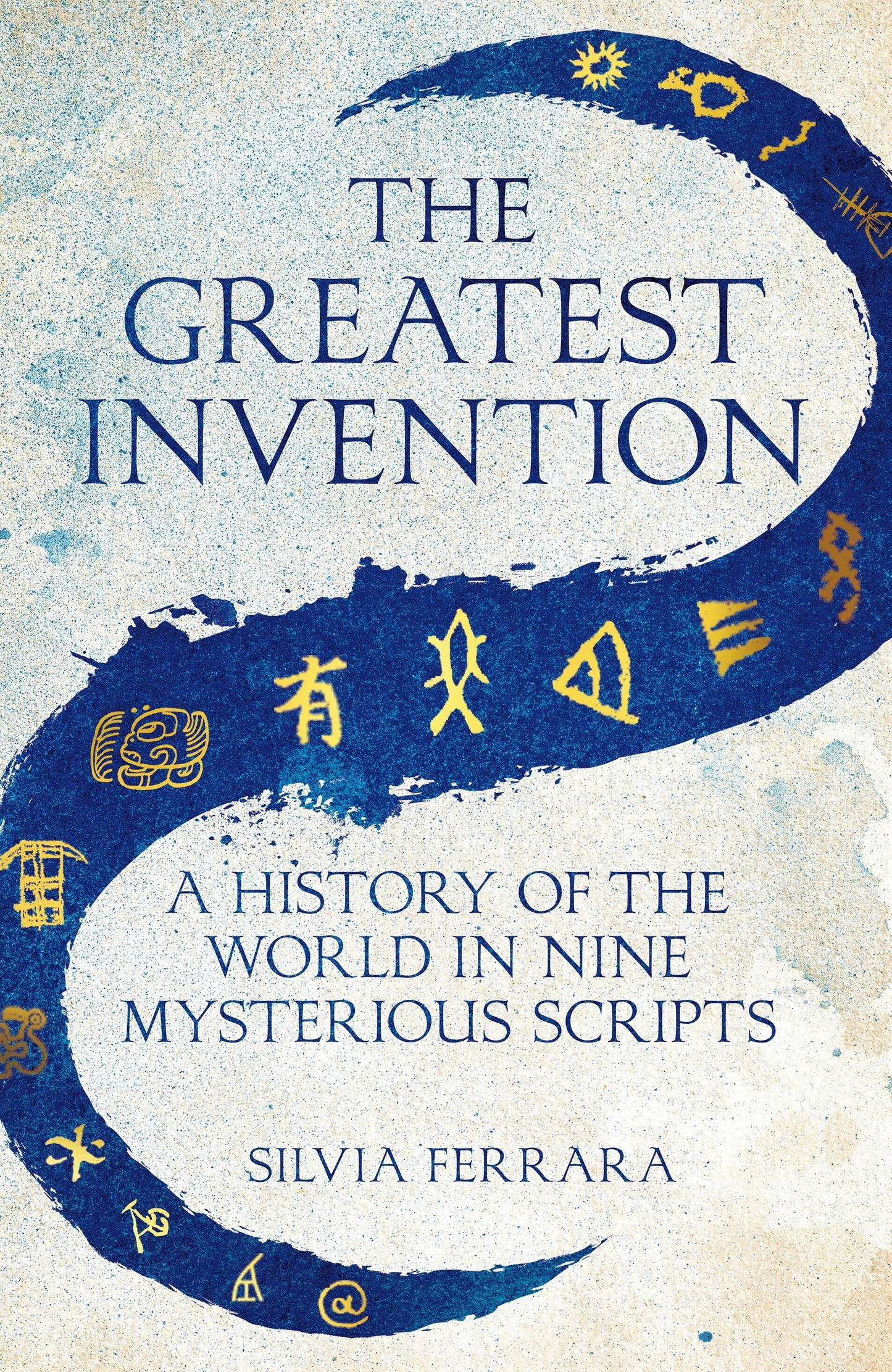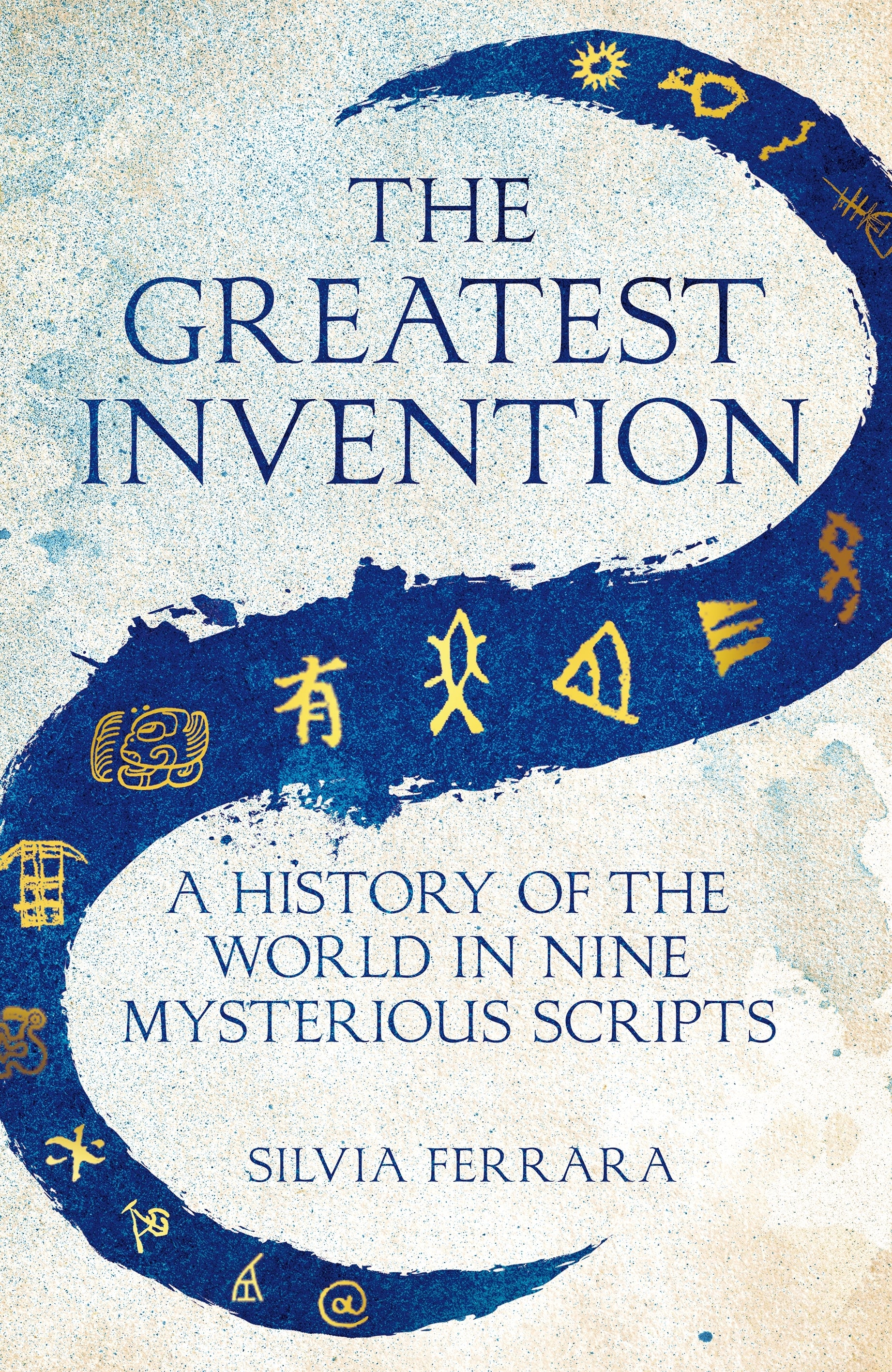Silvia Ferrara
The Greatest Invention
The Greatest Invention
Couldn't load pickup availability
Lindsay's Review
Despite a recent spate of books on the history of written language, this one still stands apart. Other accounts tend to focus principally on written language as literature, such as the fascinating book Papyrus that uses the Library of Alexandria as its focal lens, and which remains doggedly tied to the Mesopotamian-Mediterranean evolution of writing. In The Greatest Invention, the theme of the evolution of writing has a broader international view; it includes all the usual suspects from Mesopotamia, India, Crete and China, but also discusses lesser-known scripts from Easter Island, the Pacific region, North, Central and South America.
Written with a light and readable tone, the book explains the formation of written languages in layperson’s terms, with a hint of modern humour that bridges the gap between past and present forms of writing. Yes, Ferrara mentions Emojis! Her focus on the different symbolic forms of early written language, rather than meaning through literature, as well as symbolic forms such as the Phaistos Disc, the Quipu and the Harappan Seals, shows that the innovation of written language is still a hotly debated subject. Although not all examples of formative writing are included, Ferrara’s study covers the broad array of styles and symbolic forms from around the world. She also avoids specialist terminology, allowing the general reader an insight into the dark spaces of the past where linguists and cryptographers still seek knowledge. The study moves around in space and time, covering many continents and periods up to the modern day, and tackles such artistic linguistic creative attempts as the fascinating Voynich Manuscript and Hildegard of Bingen’s Manuscript.
Written in a very readable form itself, the book can serve as either a useful introduction into the world of ancient writing systems, or for those already well-read in the area, as a detailed reminder of the evolution and rules of the written form. Providing invaluable insight into the working of the human mind, communication and shared thought processes, the narrative is carried along at a clipping pace by the personal insights and humour of the author.
Publishers Reviews
This book tells the story of our greatest invention. Or, it almost does. Almost, because while the story has a beginning – in fact, it has many beginnings, not only in Mesopotamia, 3,100 years before the birth of Christ, but also in China, Egypt and Central America – and it certainly has a middle, one that snakes through the painted petroglyphs of Easter Island, through the great machines of empires and across the desks of inspired, brilliant scholars, the end of the story remains to be written. The invention of writing allowed humans to create a record of their lives and to persist past the limits of their lifetimes. In the shadows and swirls of ancient inscriptions, we can decipher the stories they sought to record, but we can also tease out the timeless truths of human nature, of our ceaseless drive to connect, create and be remembered. The Greatest Invention chronicles an uncharted journey, one filled with past flashes of brilliance, present-day scientific research and the faint, fleeting echo of writing’s future. Professor Silvia Ferrara, a modern-day adventurer who travels the world studying ancient texts, takes us along with her; we touch the knotted, coloured strings of the Incan khipu and consider the case of the Phaistos disk. Ferrara takes us to the cutting edge of decipherment, where high-powered laser scanners bring tears to an engineer’s eye, and further still, to gaze at the outline of writing’s future. The Greatest Invention lifts the words off every page and changes the contours of the world around us – just keep reading.
Share


